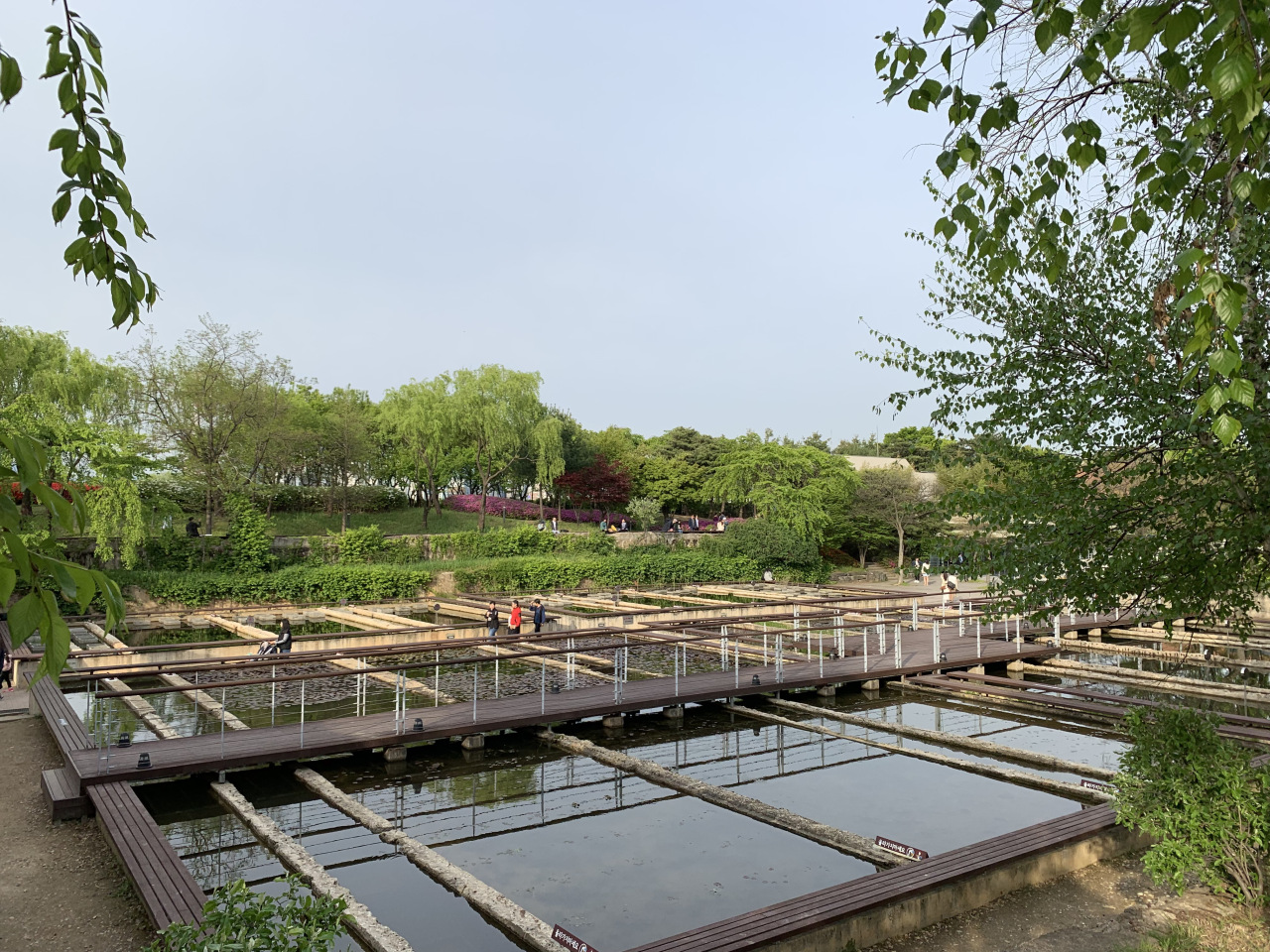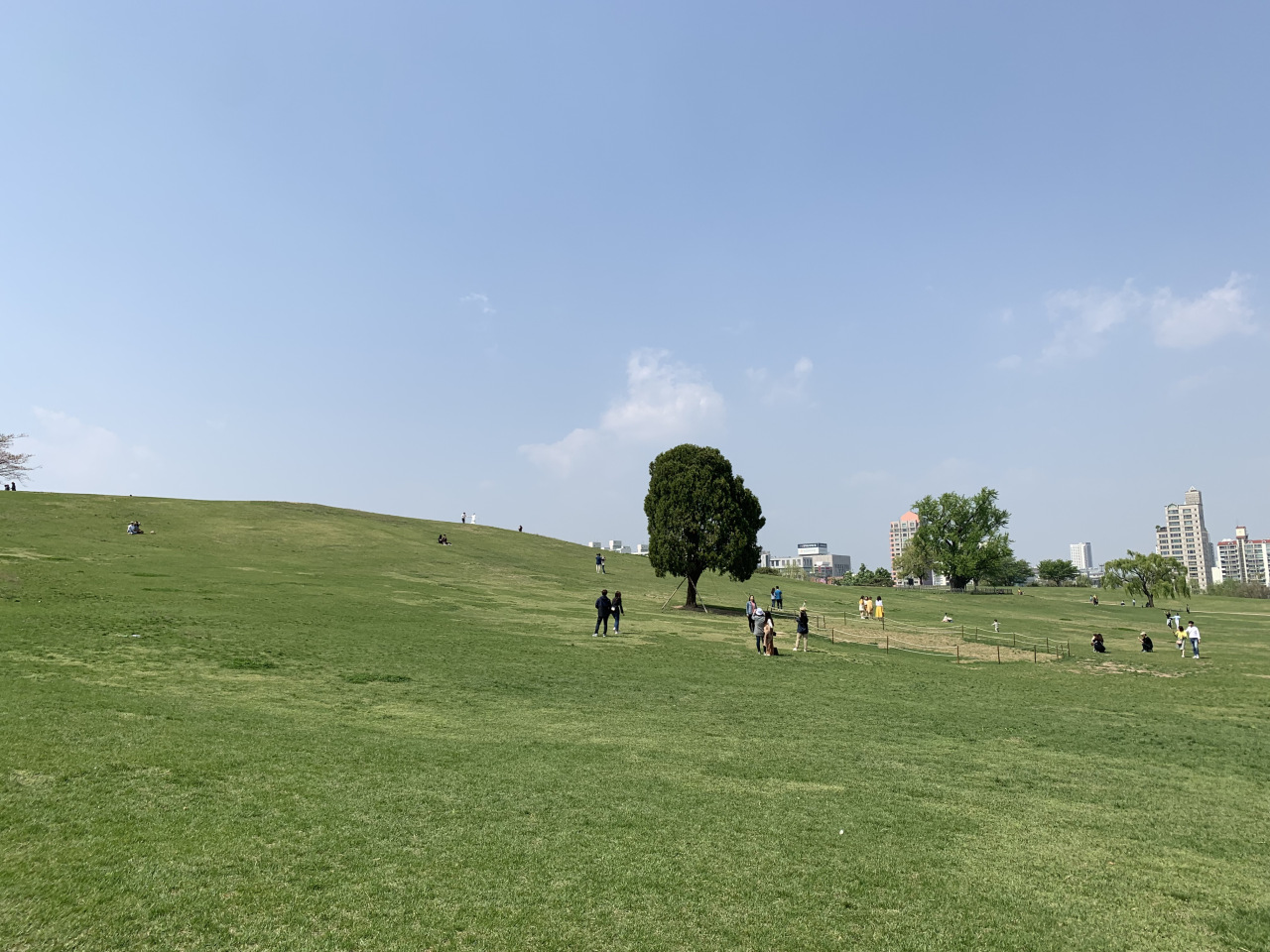Spring is upon us, which means the picnic season is here. Seoul has its fair share of greenery, and below are some of the most frequented parks for spring outings in the city.
Yeouido Park
 |
Yeouido Park (Kim Arin/The Korea Herald) |
 |
Yeouido Park (Kim Arin/The Korea Herald) |
Yeouido Park is a gigantic municipal park in central Yeouido, Yeongdeungpo-gu. The park, which sits in the center of the island, divides Yeouido’s east and west areas. Originally built as an airfield during the Japanese colonial era in 1916, it was transformed into a plaza in 1971 and then into a park in 1999.
The park now features over 22,900 square meters of greenery, including a Korean traditional forest that grows trees native to the land. Ponds, streams, and diverse species of trees, including pine trees, oak trees, cherry trees and rhododendron, together form a natural ecosystem, an official of the park said.
Basketballs, bicycles and in-line skates can be rented on the site. The park’s bicycle trail and jogging track, which circle its periphery, lead to the nearby Hangang Park.
Yeouido Park is situated in the center of a public transportation hub, surrounded by three subway stations -- Yeouido, Yeouinaru and National Assembly -- and a bus transfer center.
Seonyudo Park
 |
Seonyudo Park (Kim Arin/The Korea Herald) |
 |
Seonyudo Park (Kim Arin/The Korea Herald) |
Seonyudo Park is a tiny island located west of Yeouido, in the middle of Yanghwa Bridge. It is popular with photographers, as its observatory boasts spectacular night views of Seoul, including Namsan, Gwanaksan, Bukhansan, Cheonggyesan, the National Assembly building and the World Cup Stadium.
Before opening as a park in 2002, Seonyudo was the site of a water purification plant. Aspects of its past life remain, with the water treatment facilities transformed into architectural and landscaping features.
The park won the Asia-Pacific Landscape Architecture award in 2004 for its aesthetic marriage of concrete structures and vegetation. It is also Korea’s first environmental regeneration ecological park. A leisurely walk around the park takes about an hour. The park is closed between midnight and 6 a.m.
Visitors are recommended to take a bus to Seonyudo, as it takes about 15 minutes to walk there from the nearest subway station. Only disabled parking is available.
Gyeongui Line Forest Park
 |
Gyeungui Line Forest Park (Kim Arin/The Korea Herald) |
Gyeongui Line Forest Park is constructed along a former railroad (Gyeongui Line) that runs along Yeonnam-dong, Mapo-gu, west of Seoul. The Seoul Metropolitan Government transformed the long-neglected site into a park in 2016. Often highlighted as a successful example of an urban regeneration project, the park is nicknamed Yeontral Park by locals, after Central Park in New York.
The most crowded area of the park is near the subway station of Hongdae, a college town and bustling party district. Cafes, restaurants and bars are lined up on both sides of the forest road, making it lively even at night.
The Yeonnam-dong district can be reached via Exit No. 3 of Hongdae Station on Subway Line No. 2.
Seoul Olympic Park
 |
Seoul Olympic Park (Kim Arin/The Korea Herald) |
 |
Seoul Olympic Park (Kim Arin/The Korea Herald) |
The Olympic Park in Songpa-gu was first built to host the 1988 Seoul Olympics. Its seemingly endless green field is inhabited by wild rabbits. It has been commended by the International Olympic Committee as one of the best examples of Olympic heritage management.
National Sports Promotion Corp., which manages the park, has been organizing sports, culture and arts events at the six stadiums since its opening. In January, the government-run corporation unveiled plans to offer new recreational activities at the park, including a K-pop VR station and a screen sports center.
Mongchontoseong Station on Subway Line No. 8 and Olympic Park Station on Subway Line Nos. 5 and 9 are closest to the park.
By Kim Arin (
arin@heraldcorp.com)













![[Lee Byung-jong] The perils of political leadership](http://res.heraldm.com/phpwas/restmb_idxmake.php?idx=644&simg=/content/image/2024/12/19/20241219050082_0.jpg)
